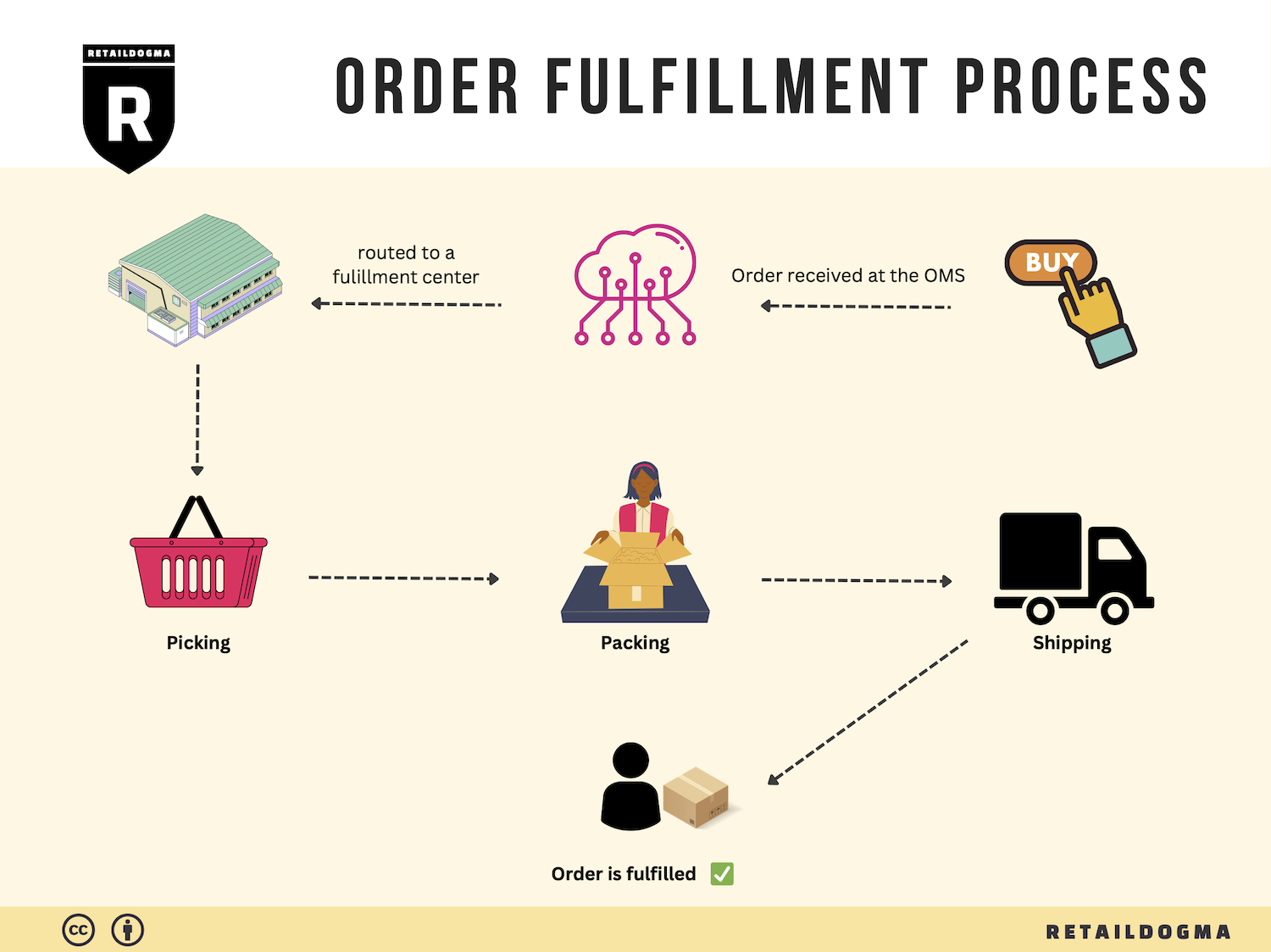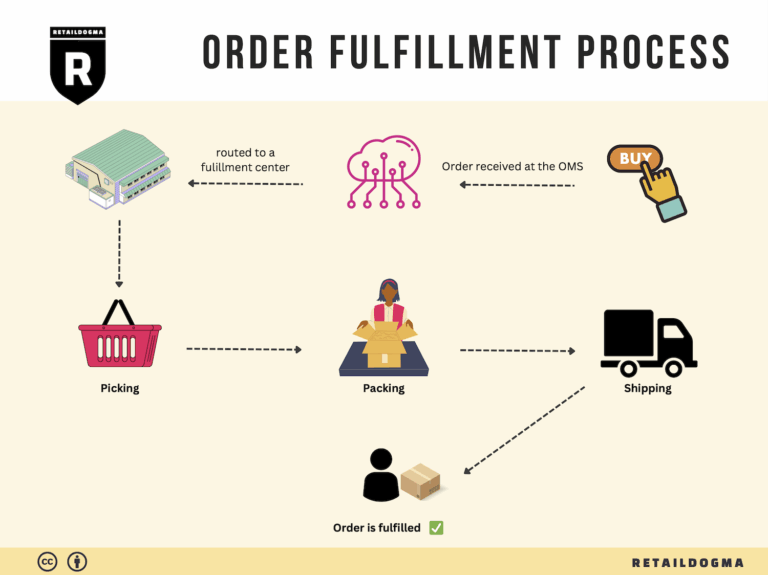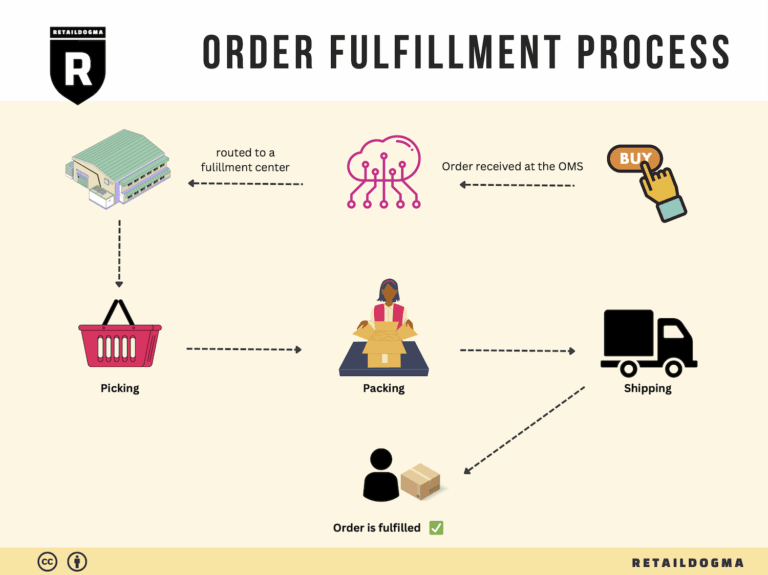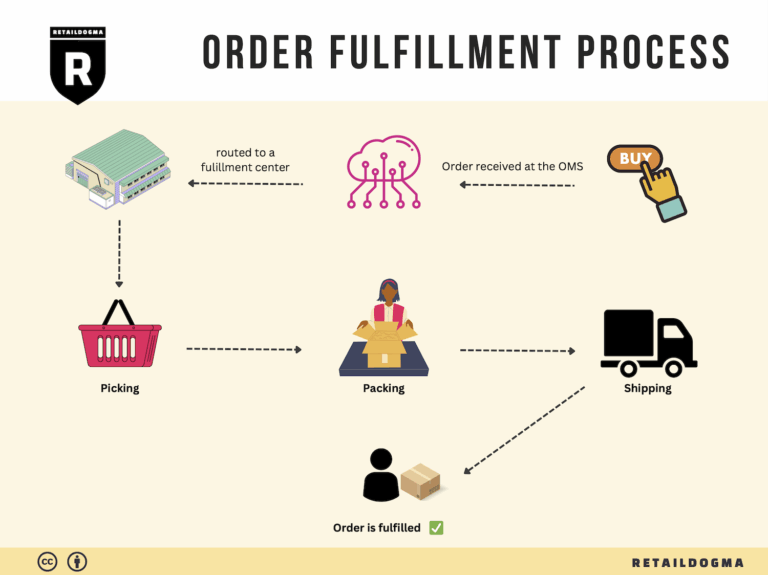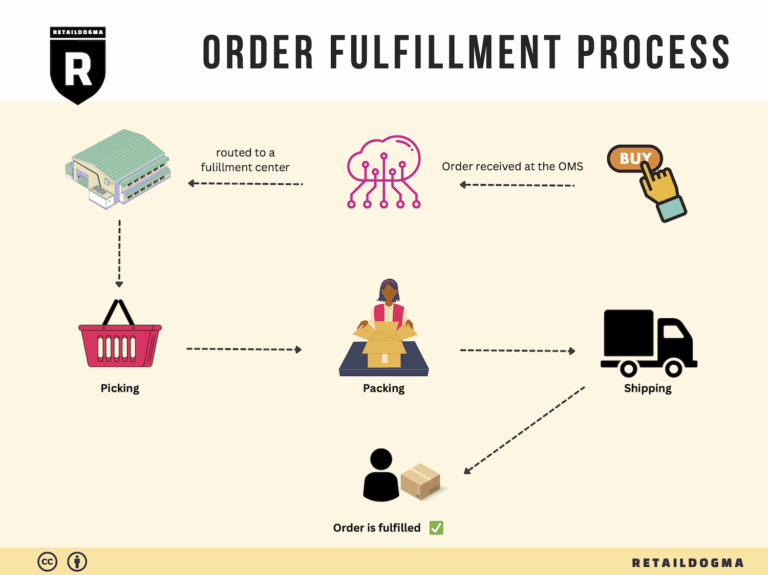Ecommerce Fulfillment Services: The Ultimate Guide (2025)
What is E-commerce Fulfillment? An Introduction for Growing Businesses
Understanding E-commerce Fulfillment
For many growing online businesses, the excitement of expanding sales often comes with an overwhelming challenge: managing the logistics of packing and shipping orders. As orders increase, so do the complexities of ensuring each package reaches its destination on time and in perfect condition. This is where e-commerce fulfillment comes into play. At its core, fulfillment is the process of getting a product from your inventory to your customer’s doorstep. It encompasses everything from receiving inventory and storing products to picking, packing, and shipping orders.
This guide aims to demystify e-commerce fulfillment by exploring the various models available to businesses, including third-party logistics (3PL) and Fulfillment by Amazon (FBA). Each model has its unique advantages and can cater to different business needs, making it crucial for you to understand which option aligns best with your growth strategy.
In addition to exploring fulfillment models, we will cover the core services that fulfillment partners typically offer. These include warehousing, inventory management, order processing, shipping, and returns management. Understanding these services will help you identify what you need from a fulfillment partner and how those services can streamline your operations.
Choosing the right fulfillment partner is a critical decision that can significantly impact your customer satisfaction and overall business efficiency. We will provide guidance on what to look for when evaluating potential partners, including their technology capabilities, customer service, and scalability.
Lastly, we’ll discuss pricing structures in fulfillment services, highlighting how to navigate costs and avoid hidden fees. Understanding the pricing landscape is vital for budgeting and ensuring you receive value for your investment.
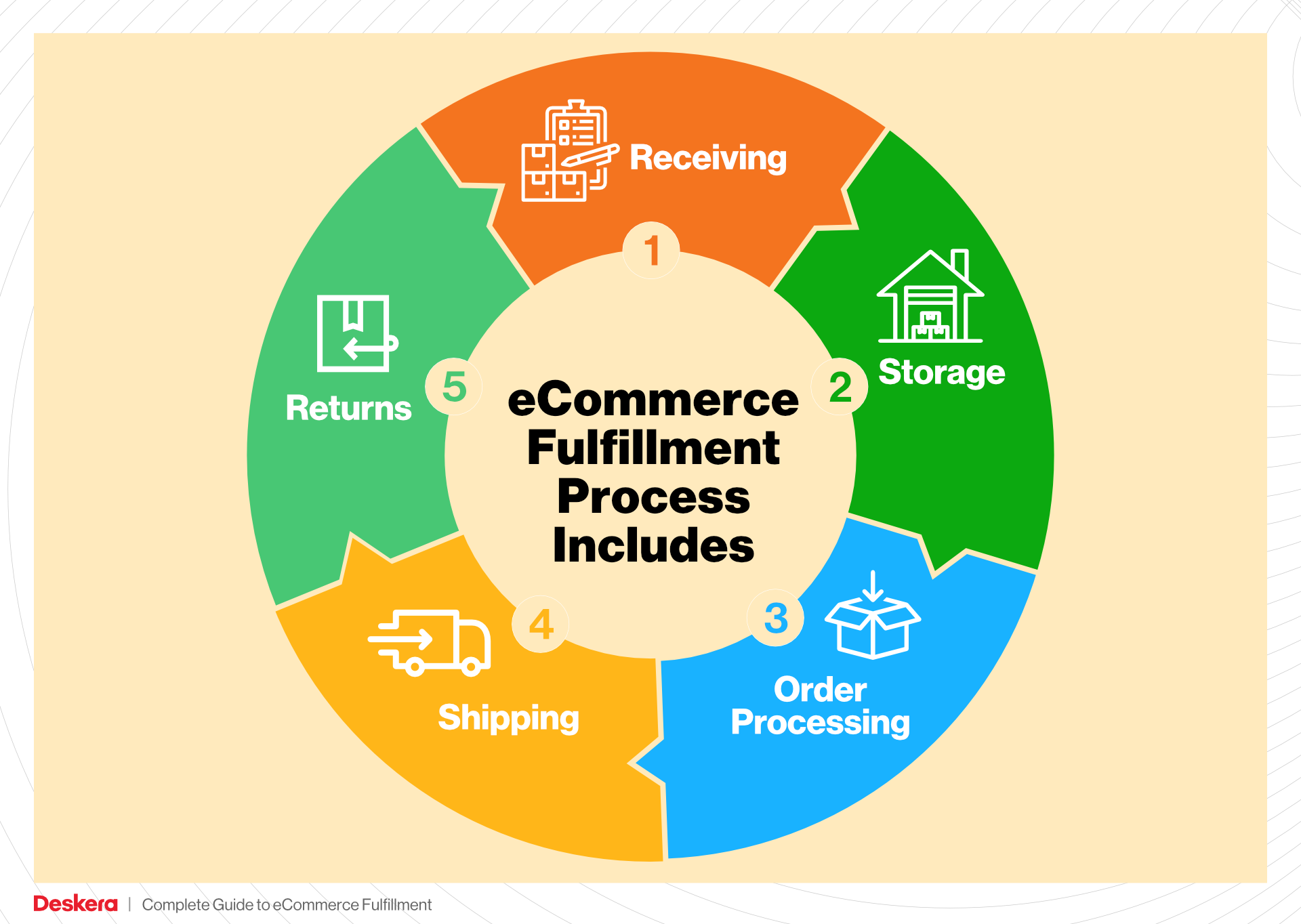
The goal of this guide is to empower you to make informed decisions about your logistics strategy. By understanding the fundamentals of e-commerce fulfillment, you can focus on what you do best—growing your business—while leaving the complexities of logistics to a capable partner. Whether you’re just starting out or looking to optimize your existing fulfillment processes, this guide will serve as a valuable resource in navigating the world of e-commerce fulfillment.
What You’ll Learn In This Guide
- What is E-commerce Fulfillment? An Introduction for Growing Businesses
- The Order Fulfillment Process: From ‘Buy’ Button to Customer’s Door
- Comparing Fulfillment Models: In-House vs. 3PL vs. Dropshipping
- A Deep Dive into Amazon FBA: Pros, Cons, and Who It’s For
- Core Services Offered by Fulfillment Centers
- How to Choose a Fulfillment Partner: A 6-Point Checklist
- Understanding Fulfillment Pricing: A Breakdown of Common Fees
- Frequently Asked Questions (FAQs) about Fulfillment
- Conclusion: Is Outsourcing Fulfillment the Right Move for Your Business?
- Important Disclaimer
The Order Fulfillment Process: From ‘Buy’ Button to Customer’s Door
1. Receiving Inventory
The first step in the order fulfillment process is receiving inventory. This involves the arrival of products from manufacturers or suppliers at your warehouse or fulfillment center. During this stage, each shipment is carefully inspected for accuracy, quality, and any potential damage. This is where the concept of Stock Keeping Units (SKUs) becomes crucial. Each product is assigned a unique SKU, enabling easy tracking and management of inventory levels.
Importance: Proper receiving procedures are vital to ensure that the correct quantities and types of products are accounted for. This reduces discrepancies later in the fulfillment process and minimizes the risk of stockouts or overstock situations. Accurate receiving also sets the stage for effective inventory management, which is essential for maintaining customer satisfaction through timely deliveries.
2. Warehouse Storage
Once the inventory has been received and verified, it is then stored in the warehouse. Effective warehousing involves organizing products in a way that optimizes space and facilitates easy access. Key strategies here include utilizing shelving units, bins, and pallets, as well as implementing a systematic layout that promotes efficient movement within the warehouse.
Importance: Proper storage minimizes retrieval time, which is critical for fulfilling orders quickly. Effective warehouse management ensures that products are stored in a logical order, making it easier to locate items when orders are placed. Additionally, a well-organized warehouse reduces the risk of errors and improves overall operational efficiency.
3. Order Picking
Order picking is the process of selecting items from the warehouse to fulfill customer orders. This step usually involves generating a pick list, which outlines the items and quantities needed for each order. There are various picking methods, including single order picking, batch picking, and zone picking, each suited to different business models and order volumes.
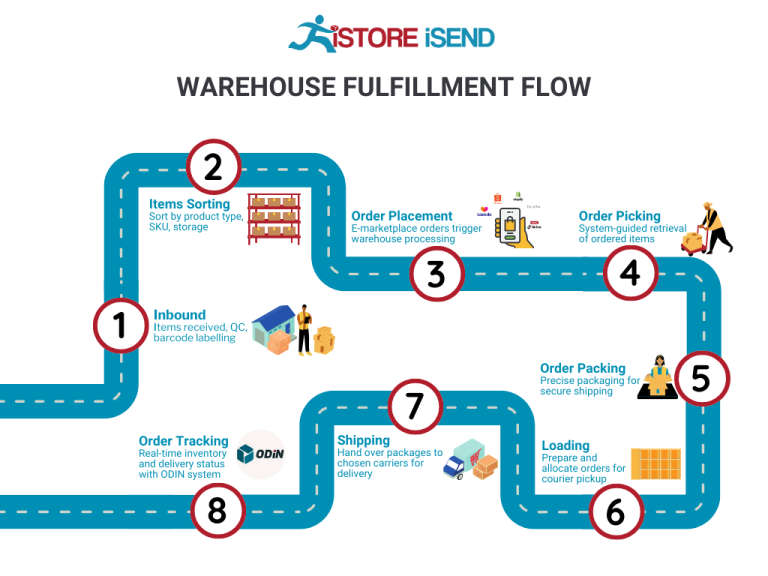
Importance: Efficient order picking is key to minimizing fulfillment times and ensuring accuracy. A well-executed picking process not only enhances customer satisfaction through faster shipping but also optimizes labor costs. By employing technology, such as barcode scanners and automated systems, businesses can improve the accuracy and speed of their picking operations, reducing the chances of errors and returns.
4. Order Packing
After items have been picked, they move to the packing stage. Here, products are carefully packed into boxes or envelopes, often with protective materials to prevent damage during transit. The packing process should also consider branding opportunities, such as custom packaging and inserts, which can enhance the customer’s unboxing experience.
Importance: Order packing is crucial for ensuring that products arrive at the customer’s location in perfect condition. Efficient packing processes help reduce shipping costs by optimizing box sizes and minimizing void space. Additionally, this stage presents an opportunity to reinforce brand identity through thoughtful packaging, which can lead to increased customer loyalty and positive reviews.
5. Shipping & Delivery
The final step in the order fulfillment process is shipping and delivery. Once orders are packed, they are labeled and handed over to shipping carriers. Businesses must choose the right carriers based on factors like delivery speed, cost, and reliability. This step includes generating shipping labels and tracking information, which can be shared with customers for real-time updates.
Importance: Timely shipping is essential for customer satisfaction and retention. Customers today expect quick delivery times, so leveraging a robust shipping network can significantly impact a business’s reputation. Moreover, providing tracking information enhances transparency, allowing customers to feel informed and engaged throughout the delivery process. By optimizing shipping routes and methods, businesses can also reduce costs and improve their bottom line.
Conclusion
Understanding and mastering the order fulfillment process is critical for e-commerce businesses aiming to scale effectively. Each step, from receiving inventory to shipping and delivery, plays a pivotal role in ensuring customer satisfaction and operational efficiency. By implementing best practices and leveraging technology at each stage, businesses can streamline their fulfillment processes, ultimately leading to increased sales and customer loyalty.
Comparing Fulfillment Models: In-House vs. 3PL vs. Dropshipping
Fulfillment Model Comparison Table
| Model | Who Handles Inventory | Best For (Business Stage) | Key Advantage | Key Disadvantage |
|---|---|---|---|---|
| In-House Fulfillment | The business itself | Established businesses | Full control over inventory and processes | High operational costs and complexity |
| Third-Party Logistics (3PL) | A third-party provider | Startups and growing businesses | Scalable solutions and reduced overhead | Less control over fulfillment process |
| Dropshipping | Supplier or manufacturer | New businesses and niche sellers | Low upfront costs and minimal risk | Lower profit margins and reliance on suppliers |
In-House Fulfillment
In-house fulfillment involves managing all aspects of inventory and order processing within your own facilities. This model is often chosen by established businesses that have the resources and infrastructure to handle logistics internally. Companies that opt for in-house fulfillment enjoy complete control over their inventory, allowing for tailored processes that align with their brand identity. They can create customized packaging, manage the quality of order fulfillment, and maintain direct oversight of operational efficiency.
However, this control comes at a price. In-house fulfillment typically requires significant investment in warehousing, staffing, and technology, which can lead to high operational costs. Additionally, managing logistics can be complex and time-consuming, diverting focus from core business activities such as marketing and product development. Businesses must also contend with fluctuations in demand, which can lead to excess inventory or stockouts if not managed properly. For these reasons, while in-house fulfillment can be beneficial for established companies, it may not be the most scalable or cost-effective solution for businesses in their early stages or those experiencing rapid growth.
Third-Party Logistics (3PL)
Third-party logistics (3PL) providers offer a comprehensive solution for e-commerce fulfillment, handling warehousing, inventory management, order processing, and shipping on behalf of businesses. This model is particularly advantageous for startups and growing companies that need to scale their operations without the burden of managing logistics in-house. By partnering with a 3PL, businesses can leverage the provider’s expertise, technology, and established shipping networks, allowing them to focus on their core competencies.
One of the key advantages of using a 3PL is scalability. As your business grows, a 3PL can easily adjust to increased order volumes without the need for significant capital investment. Additionally, many 3PL providers, like eFulfillment Service, offer flexible pricing models, with no minimum order requirements or long-term contracts, making it easier for businesses to manage costs. However, the primary disadvantage is the potential loss of control over the fulfillment process. Relying on an external partner means that businesses must trust their 3PL to maintain quality and accuracy, which can be challenging if the provider does not meet expectations. Effective communication and a strong partnership are essential to mitigate these risks.
Dropshipping
Dropshipping is a fulfillment model where the retailer does not hold inventory but instead relies on suppliers or manufacturers to ship products directly to customers. This model is particularly appealing for new businesses and niche sellers, as it requires minimal upfront investment and eliminates the risks associated with unsold inventory. Entrepreneurs can launch their e-commerce stores with a wide range of products without the burden of warehousing or logistics.
The key advantage of dropshipping is its low operational risk. Since there is no need to invest in inventory upfront, businesses can test various products and markets with relatively little financial commitment. Additionally, dropshipping allows for a flexible business model, as retailers can easily pivot their offerings based on market trends and customer preferences. However, the downside is that profit margins can be lower compared to other fulfillment models, as suppliers often charge higher prices for their services. Furthermore, businesses are reliant on their suppliers for product quality and shipping times, which can lead to customer dissatisfaction if not carefully managed. Retailers must also navigate issues related to inventory availability and order fulfillment accuracy, as discrepancies can impact their reputation and customer loyalty.
In conclusion, the choice of fulfillment model—whether in-house, 3PL, or dropshipping—depends on your business’s specific needs, stage of growth, and resources. Each model has its advantages and disadvantages, and understanding these can help e-commerce business owners make informed decisions that align with their long-term operational strategies.
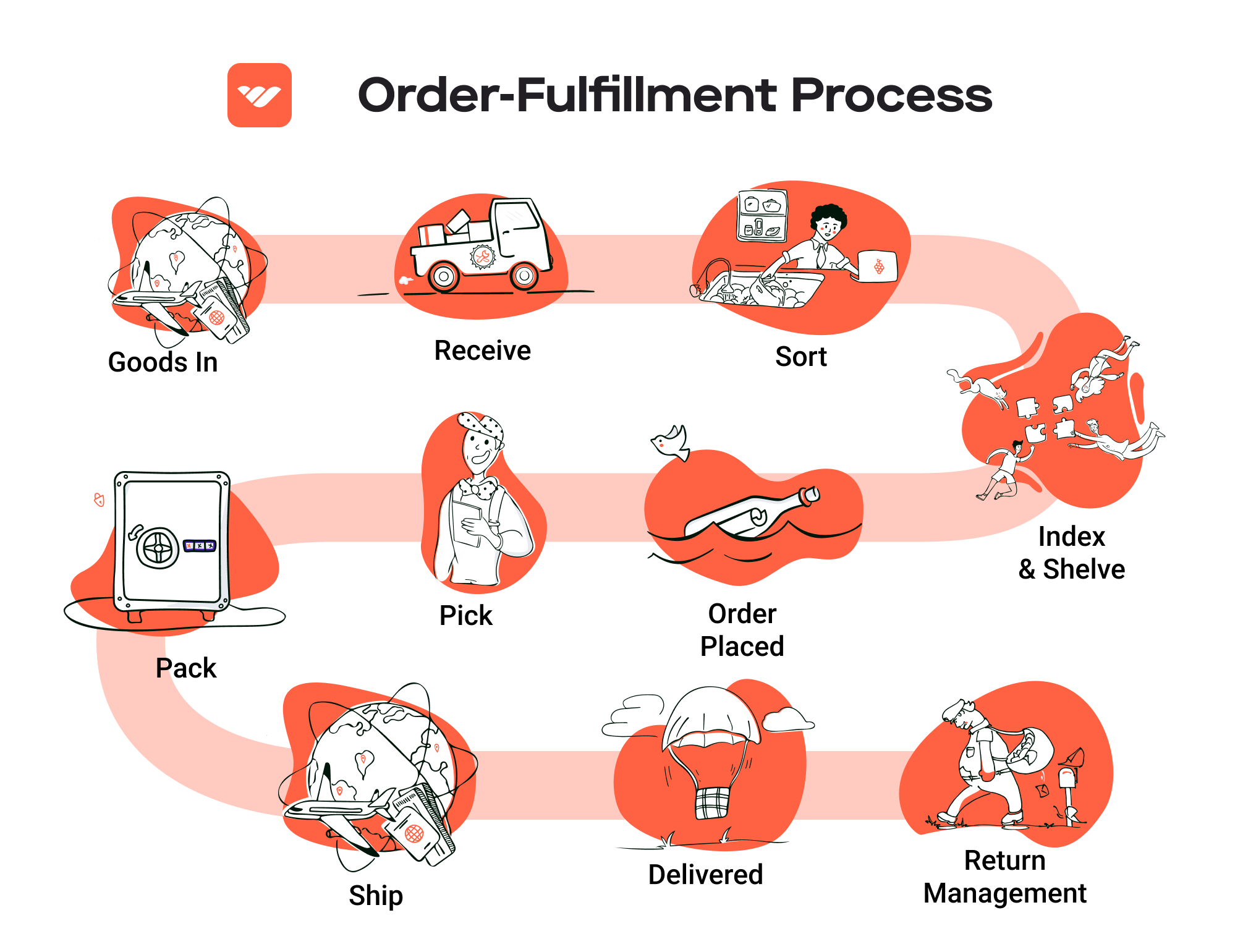
A Deep Dive into Amazon FBA: Pros, Cons, and Who It’s For
Understanding Fulfillment by Amazon (FBA)
Fulfillment by Amazon (FBA) is a service offered by Amazon that enables sellers to store their products in Amazon’s fulfillment centers. Amazon takes care of storage, packaging, and shipping of products, as well as handling customer service and returns. This service allows sellers to leverage Amazon’s extensive logistics network and customer base, simplifying the fulfillment process while enhancing customer experience.
How FBA Works
-
Product Listing: Sellers create listings for their products on Amazon. They can choose to enroll their items in the FBA program, which makes them eligible for Amazon Prime and other benefits.
-
Shipping Inventory: Sellers ship their products to Amazon’s fulfillment centers. Amazon provides specific guidelines on how to package and label items to ensure smooth processing.
-
Storage and Management: Once the inventory arrives at the fulfillment center, Amazon manages it. Sellers can track inventory levels through their Amazon Seller Central account.
-
Order Processing: When a customer places an order, Amazon picks, packs, and ships the product on behalf of the seller. The seller benefits from Amazon’s fast shipping options, including Prime two-day delivery.
-
Customer Service and Returns: Amazon handles all customer service inquiries related to the FBA products, including returns and refunds, allowing sellers to focus on their core business operations.
Pros of Fulfillment by Amazon (FBA)
1. Prime Eligibility
One of the standout advantages of using FBA is that products become eligible for Amazon Prime. This is crucial as Prime members are more likely to purchase items with free two-day shipping, significantly increasing sales potential.
2. Customer Trust
Amazon is a well-established brand with a reputation for reliability and customer service. By using FBA, sellers can benefit from this trust, as customers often feel more secure purchasing from sellers that use Amazon’s fulfillment services.
3. Multi-Channel Fulfillment
FBA is not limited to sales on Amazon alone. Sellers can also use FBA to fulfill orders from other sales channels, such as their own websites or other online marketplaces. This flexibility allows for streamlined operations across multiple platforms.
4. Simplified Logistics
FBA takes the burden of logistics off the seller’s shoulders. From storage to shipping and customer service, Amazon handles the complexities, enabling sellers to focus on marketing and product development.
5. Scalability
As businesses grow, so do their fulfillment needs. FBA offers a scalable solution, allowing sellers to increase their inventory without the need for additional warehouse space or staffing.
Cons of Fulfillment by Amazon (FBA)
1. High Fees
While FBA can simplify logistics, it comes with a cost. Amazon charges various fees, including storage fees for inventory stored in their warehouses and fulfillment fees for each order shipped. These costs can accumulate quickly, particularly for low-margin products.
2. Strict Inventory Rules
Amazon has specific inventory management rules that sellers must adhere to. This includes guidelines on packaging, labeling, and even product dimensions. Non-compliance can lead to extra fees or even suspension of FBA privileges.
3. Commingling Risks
FBA uses a commingling model, meaning that products from different sellers may be stored together. This can lead to issues where sellers receive returns of products that are not theirs, potentially resulting in lost revenue and customer dissatisfaction.
4. Limited Control Over Branding
When using FBA, sellers have limited control over the packaging and branding of their products. Amazon handles the packaging, which may not align with the seller’s branding strategy, affecting the overall customer experience.
5. Dependency on Amazon
Relying on FBA means putting a significant portion of your business in Amazon’s hands. Any changes in Amazon’s policies, fees, or algorithms can directly impact sellers’ operations and profitability.
Who is FBA Best For?
Fulfillment by Amazon can be an excellent choice for various types of sellers, particularly:
-
Small to Medium-Sized Businesses: FBA allows smaller sellers to compete with larger brands by providing access to Amazon’s logistics and customer base without the need for significant upfront investment in infrastructure.
-
E-commerce Entrepreneurs: Those looking to start an online business can benefit from the simplicity FBA offers, allowing them to focus on product sourcing and marketing rather than logistics.
-
Brands Looking to Scale: For established brands wanting to expand their reach, FBA can facilitate rapid growth by leveraging Amazon’s vast network and resources.
-
Sellers with Seasonal Products: Businesses that experience seasonal spikes in demand can utilize FBA to manage inventory without long-term commitments, as they can adjust their stock levels based on demand.
In conclusion, Fulfillment by Amazon presents a compelling fulfillment solution for many e-commerce sellers. While it offers significant advantages in terms of customer trust and logistics management, potential downsides such as high fees and limited control should be carefully considered. By evaluating these factors, sellers can determine whether FBA aligns with their business goals and operational capabilities.
Core Services Offered by Fulfillment Centers
Inventory Management & Warehousing
Effective inventory management and warehousing are foundational elements of a successful fulfillment operation. Fulfillment centers provide businesses with the necessary infrastructure to store their products securely and efficiently. This service encompasses not only the physical storage of goods but also the systematic tracking of inventory levels, product locations, and stock movements.
Benefits for E-commerce Businesses:
-
Space Optimization: Fulfillment centers utilize advanced storage solutions to maximize space, ensuring that businesses can store a larger quantity of products without needing to invest in their own warehousing facilities.
-
Real-Time Inventory Tracking: By employing sophisticated inventory management systems, fulfillment centers offer real-time tracking of stock levels. This allows e-commerce businesses to maintain optimal inventory levels, reducing the risk of stockouts or overstock situations.
-
Cost Efficiency: Outsourcing warehousing can significantly lower overhead costs related to property maintenance, utilities, and staffing. This enables businesses to allocate resources more effectively towards growth initiatives.
-
Scalability: As an e-commerce business grows, its inventory needs will evolve. Fulfillment centers provide scalable solutions that can adapt to increasing demand without requiring significant changes to operations.
Pick and Pack Services
Pick and pack services are crucial for the efficient processing of orders in e-commerce. This service involves the selection of items from the warehouse (picking) and preparing them for shipment (packing). Fulfillment centers employ experienced staff and automated systems to streamline this process, ensuring accuracy and speed.
Benefits for E-commerce Businesses:
-
Speed and Efficiency: With dedicated teams trained in best practices, fulfillment centers can pick and pack orders quickly, reducing lead times and improving customer satisfaction.
-
Order Accuracy: Fulfillment centers often utilize barcode scanning and other technologies to minimize human error during the picking and packing process. This leads to higher order accuracy, which is essential for maintaining customer trust.
-
Custom Packaging Options: Many fulfillment centers offer customizable packing solutions, allowing businesses to create memorable unboxing experiences that reinforce their brand identity. This can include branded boxes, personalized notes, or other unique touches that enhance customer loyalty.
-
Reduced Labor Costs: By outsourcing these services, e-commerce businesses can avoid the costs associated with hiring and training in-house staff for order fulfillment, thus optimizing their operational expenditures.
Kitting and Assembly
Kitting and assembly services involve the grouping of various items into a single package or kit, often required for promotional offers, gift sets, or product bundles. Fulfillment centers can handle the assembly process, ensuring that products are packaged together correctly and efficiently.
Benefits for E-commerce Businesses:
-
Streamlined Operations: By outsourcing kitting and assembly, e-commerce businesses can focus on their core competencies, such as product development and marketing, rather than the labor-intensive process of preparing kits.
-
Increased Sales Opportunities: Offering bundled products can enhance sales and increase average order values. Fulfillment centers can quickly adapt to seasonal promotions or new product launches, enabling businesses to capitalize on market trends.
-
Quality Control: Fulfillment centers often have quality control measures in place to ensure that all items in a kit are accounted for and meet the required standards before shipping. This reduces the likelihood of returns due to missing or defective items.
-
Flexibility and Customization: Businesses can easily modify their kitting options based on customer demand or changing marketing strategies, allowing for more agile responses to market conditions.
Returns Management (Reverse Logistics)
Returns management, or reverse logistics, is an essential service offered by fulfillment centers to handle product returns efficiently. This process includes receiving returned items, inspecting them, and managing restocking or disposal as necessary. An effective returns management system can significantly impact customer satisfaction and retention.
Benefits for E-commerce Businesses:
-
Streamlined Returns Process: Fulfillment centers provide a structured approach to handling returns, making it easier for customers to return products. This enhances the overall customer experience, as hassle-free returns can improve brand loyalty.
-
Inventory Accuracy: By managing returns effectively, fulfillment centers help maintain accurate inventory levels. Returned items can be quickly processed and restocked, reducing the risk of stock discrepancies.
-
Cost Recovery: Efficient returns management can help businesses recover costs by identifying and refurbishing items that can be resold, rather than written off as losses. This can improve overall profitability.
-
Data Insights: Fulfillment centers often provide valuable insights into return patterns and reasons, allowing e-commerce businesses to address underlying issues with their products or customer service. This data can be instrumental in refining product offerings and improving customer satisfaction.
By leveraging these core services offered by fulfillment centers, e-commerce businesses can enhance their operational efficiency, reduce costs, and ultimately scale their sales and logistics operations effectively.
How to Choose a Fulfillment Partner: A 6-Point Checklist
Location & Warehouse Network
Importance: The geographical location of your fulfillment partner’s warehouses can significantly impact shipping costs, delivery times, and overall customer satisfaction. A strategically located fulfillment center can help reduce transit times and shipping expenses, which is crucial for maintaining competitive pricing and customer loyalty.
Questions to Ask:
– Where are your warehouses located, and how many do you operate?
– Do you have a network of warehouses that can cover my target customer base efficiently?
– How do you manage inventory across multiple locations?
– Can you provide shipping estimates based on different warehouse locations?
Technology & Integrations
Importance: An efficient fulfillment partner should utilize advanced technology for inventory management, order processing, and shipping logistics. Seamless integration with your e-commerce platform is essential for real-time updates and efficient operations.
Questions to Ask:
– What technology platforms do you use for inventory management and order fulfillment?
– Can your system integrate with my existing e-commerce platform (e.g., Shopify, WooCommerce)?
– How do you handle inventory tracking and reporting?
– Do you offer APIs for custom integrations if needed?
Specializations (e.g., Cold Storage, Oversized Items)
Importance: Depending on your product line, you may require specific storage solutions or handling capabilities. Whether you deal with perishable goods, oversized items, or fragile products, your fulfillment partner must have the expertise to handle your unique requirements.
Questions to Ask:
– What types of products do you specialize in handling?
– Do you have facilities for specialized storage (e.g., cold storage, hazardous materials)?
– How do you manage the specific needs of different product types?
– Can you accommodate seasonal fluctuations in inventory or special projects (e.g., kitting)?
Scalability & Capacity
Importance: As your business grows, your fulfillment partner must be able to scale operations accordingly. This includes handling increased order volumes, expanding warehouse space, and adjusting to seasonal demands without compromising service quality.
Questions to Ask:
– How do you support businesses as they scale?
– What is your maximum order capacity?
– Can you handle peak seasons, and what processes do you have in place for increased demand?
– Are there any limitations on the types of products you can fulfill as we grow?
Pricing and Contracts
Importance: Understanding the pricing structure and contract terms is vital to avoid unexpected costs and ensure a sustainable partnership. Transparency in pricing helps you budget effectively and maintain profitability.
Questions to Ask:
– What is your pricing model (e.g., per order, per item, storage fees)?
– Are there any hidden fees (e.g., setup fees, integration costs)?
– What are the terms of your contract, and is there flexibility for scaling or changing services?
– Do you require long-term commitments, or do you offer month-to-month agreements?
Customer Support & Reviews
Importance: Exceptional customer service can be the difference between a good and a great fulfillment experience. You need a partner that is responsive and proactive in addressing any issues that arise during the order fulfillment process.
Questions to Ask:
– What kind of customer support do you provide (e.g., phone, email, live chat)?
– How quickly can I expect a response to my inquiries?
– Can you provide references or case studies from businesses similar to mine?
– How do you handle errors in order fulfillment, and what is your process for resolving issues?
Conclusion
Choosing the right fulfillment partner is a critical decision for e-commerce businesses looking to scale. By following this checklist and asking the right questions, you can ensure that you select a 3PL provider that aligns with your operational needs and growth objectives. Take the time to assess each potential partner thoroughly, as the right choice can significantly impact your logistics efficiency, customer satisfaction, and ultimately, your bottom line.
Understanding Fulfillment Pricing: A Breakdown of Common Fees
Initial Setup Fees
Initial setup fees are often a one-time charge incurred when you begin using a fulfillment service. These fees may cover the cost of onboarding your business into the provider’s system, including the integration of your e-commerce platform with their inventory and order management systems. Depending on the provider, setup fees can vary widely, ranging from $0 to several hundred dollars. Some fulfillment companies, especially those targeting small to medium-sized enterprises, may waive these fees entirely to attract new clients. When evaluating fulfillment partners, inquire about their setup fees and any conditions that might apply.
Receiving Fees
Receiving fees are charged when your inventory arrives at the fulfillment center. This fee typically covers the labor involved in unloading, inspecting, and storing your products. The calculation of receiving fees can depend on several factors, such as the volume of inventory being received, the type of products (e.g., bulky items may incur higher fees), and whether special handling is required. For instance, a fulfillment center may charge a flat fee per pallet or a variable fee based on the number of units received. It’s essential to clarify how receiving fees are structured with your potential fulfillment partner to avoid unexpected costs.
Storage Fees (per pallet/bin)
Storage fees are charged for the warehousing of your inventory and are often calculated on a per-pallet or per-bin basis. This fee typically reflects the space your products occupy in the warehouse and is charged monthly. Some fulfillment centers may offer tiered pricing based on the amount of space you use; for example, the first few pallets may be charged at a higher rate, while additional pallets are at a reduced rate. Additionally, some providers impose long-term storage fees if your inventory remains unsold for an extended period. To manage costs effectively, keep a close eye on your inventory turnover rates and discuss storage fee structures upfront with your fulfillment provider.
Pick & Pack Fees (per item/order)
Pick and pack fees are incurred each time an order is processed. This fee generally includes the cost of picking items from storage, packing them securely for shipment, and preparing them for dispatch. The calculation of pick and pack fees can vary; some providers charge a flat fee per order, while others may charge based on the number of items in the order. For instance, a fulfillment center might charge $2 per order plus $0.50 for each item picked. Understanding this fee structure is crucial, especially for businesses with varying order sizes, as it can significantly impact your overall fulfillment costs.
Shipping Fees
Shipping fees are one of the most critical components of fulfillment pricing and can vary widely based on factors such as the size and weight of the package, the shipping method chosen (standard, expedited, etc.), and the destination. Most fulfillment providers partner with major carriers like USPS, UPS, and FedEx, allowing them to offer competitive shipping rates. Some providers may also charge a handling fee on top of the shipping cost. It’s important to evaluate the shipping options available and how they align with your customers’ expectations for delivery speed and cost. Additionally, inquire about any potential discounts for bulk shipping or high-volume orders, as these can lead to significant savings.
Tips for Getting an Accurate Quote
When seeking a fulfillment partner, obtaining an accurate quote requires clear communication and thorough preparation. Here are some practical tips:
-
Provide Detailed Information: Share specifics about your product types, average order volume, and shipping destinations. This data will help the provider give you a more tailored quote.
-
Ask About All Fees: Ensure you understand not only the basic costs but also any potential additional charges, such as for returns, special handling, or long-term storage.
-
Discuss Volume Discounts: Inquire about discounts for larger volumes of orders or products to better understand how scaling could affect your costs.
-
Evaluate Flexibility: Look for providers that offer flexible pricing models without long-term contracts, allowing you to adjust as your business grows.
-
Request a Breakdown: Ask for a detailed breakdown of all fees involved, including initial setup, storage, and shipping, to help you compare different providers effectively.
By following these steps, you can ensure that you receive a comprehensive and accurate fulfillment pricing quote, allowing you to make informed decisions as you scale your e-commerce business.
Frequently Asked Questions (FAQs) about Fulfillment
1. What is the difference between a warehouse and a fulfillment center?
A warehouse is primarily a storage space for goods, where inventory is kept until it is needed. In contrast, a fulfillment center specializes in processing and shipping orders directly to customers. Fulfillment centers handle the entire order fulfillment process, including picking, packing, and shipping, often integrating with e-commerce platforms for real-time inventory management.
2. What is a 3PL?
A 3PL, or third-party logistics provider, is a company that offers outsourced logistics services, including warehousing, fulfillment, and shipping. Businesses partner with 3PLs to leverage their expertise, technology, and infrastructure, allowing them to focus on core activities like marketing and product development while ensuring efficient order processing and delivery.
3. How much do fulfillment services cost?
The cost of fulfillment services varies based on several factors, including order volume, storage space requirements, and specific services needed (such as kitting or returns management). Typically, fees may include a per-order processing fee, storage fees based on the amount of space your products occupy, and shipping costs. It’s advisable to request quotes from multiple fulfillment providers to find a solution that aligns with your budget and needs.
4. How do I choose the right fulfillment provider for my e-commerce business?
When selecting a fulfillment provider, consider factors such as their experience in your industry, the range of services they offer, their technology capabilities, customer service reputation, and pricing structure. It’s also beneficial to evaluate their scalability options to ensure they can grow with your business.
5. What technology do fulfillment centers use?
Fulfillment centers typically utilize advanced technology such as inventory management systems, order management systems, and shipping software. These technologies help streamline operations, provide real-time visibility into inventory levels, and automate processes like order tracking and reporting.
6. Can I integrate my e-commerce platform with a fulfillment service?
Yes, most fulfillment services offer integrations with popular e-commerce platforms and shopping carts. This integration enables seamless order processing, inventory tracking, and shipping updates, allowing you to manage your operations from a single interface.
7. How do fulfillment services handle returns?
Fulfillment services often provide comprehensive returns management, which includes receiving returned items, inspecting their condition, restocking them if applicable, and updating inventory levels. This process can simplify the returns experience for both you and your customers.
8. What are the benefits of using a fulfillment service?
Using a fulfillment service can enhance your operational efficiency, reduce shipping costs, improve order accuracy, and provide access to advanced logistics technology. Additionally, it allows you to focus on business growth and customer satisfaction rather than the complexities of order fulfillment.
9. How do fulfillment centers ensure order accuracy?
Fulfillment centers implement various quality control measures, such as barcode scanning, double-checking orders during the picking and packing process, and utilizing trained staff to minimize errors. Many providers also offer performance metrics that track order accuracy rates.
10. What should I know about international shipping through a fulfillment provider?
When considering international shipping, it’s essential to understand the fulfillment provider’s capabilities in navigating customs regulations, shipping costs, and delivery times. A reliable fulfillment partner should have experience with international logistics and offer solutions for efficiently shipping products to customers worldwide.
Conclusion: Is Outsourcing Fulfillment the Right Move for Your Business?
Evaluating the Benefits of Outsourcing Fulfillment
Outsourcing your fulfillment operations can be a transformative strategy for e-commerce businesses looking to scale efficiently. By leveraging a third-party logistics (3PL) partner, you can save invaluable time and resources that can be redirected toward core business functions, such as marketing and product development. A reliable fulfillment service allows you to streamline your logistics processes, enabling faster order processing and delivery times, which are crucial for customer satisfaction and retention.
Scalability is another significant advantage of outsourcing fulfillment. As your business grows, so too do the complexities of managing inventory, shipping, and returns. A seasoned fulfillment partner can adjust to your changing needs without the burden of additional infrastructure costs or logistics headaches. This flexibility ensures that you can handle peak seasons and unexpected spikes in demand with ease, maintaining your service quality and brand reputation.
Moreover, partnering with a fulfillment expert provides access to industry knowledge and technology that may otherwise be out of reach for smaller businesses. From advanced inventory management systems to optimized shipping routes, a 3PL can help you enhance efficiency and reduce costs, ultimately boosting your bottom line.
Choosing the right fulfillment partner is critical for sustainable growth. It’s essential to evaluate potential providers based on their track record, customer service, and ability to align with your business goals.
Take Action Today
To determine if outsourcing fulfillment is the right move for your business, consider conducting an audit of your current shipping processes. Identify pain points, inefficiencies, and areas for improvement. This analysis will not only help you make an informed decision but also position your business for scalable success in a competitive e-commerce landscape. Don’t hesitate to explore your options—your next growth phase could be just a partnership away.
Important Disclaimer
⚠️ Important Disclaimer
The information in this guide is for educational purposes. Fulfillment services, pricing, and platform features change frequently. Always conduct your own due diligence and consult with providers directly before making business decisions.
